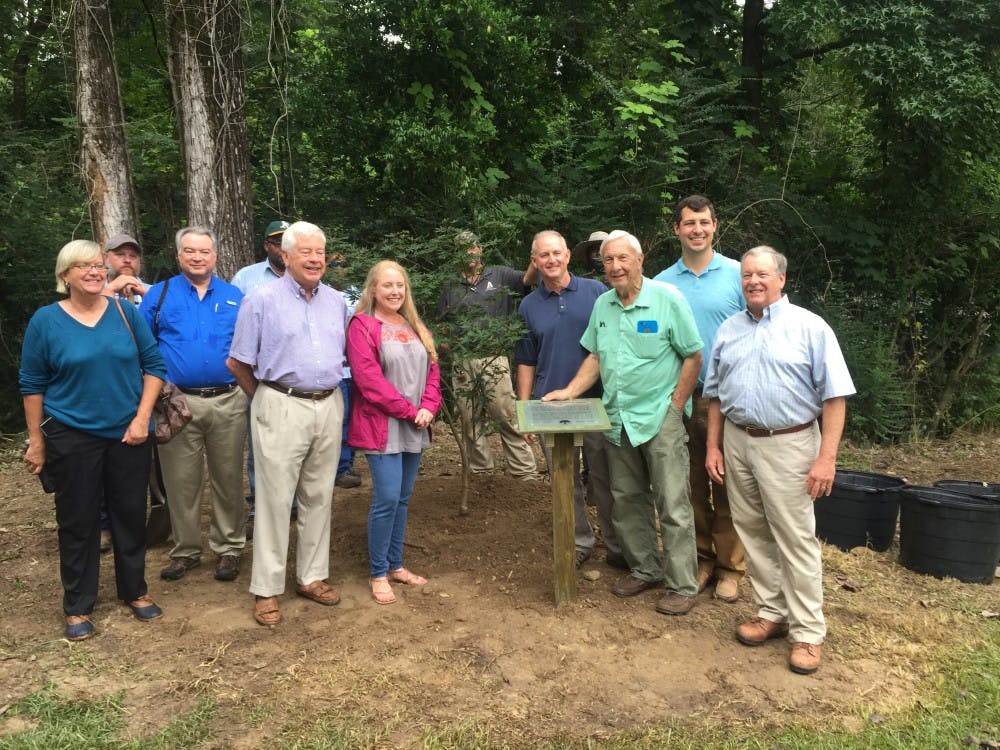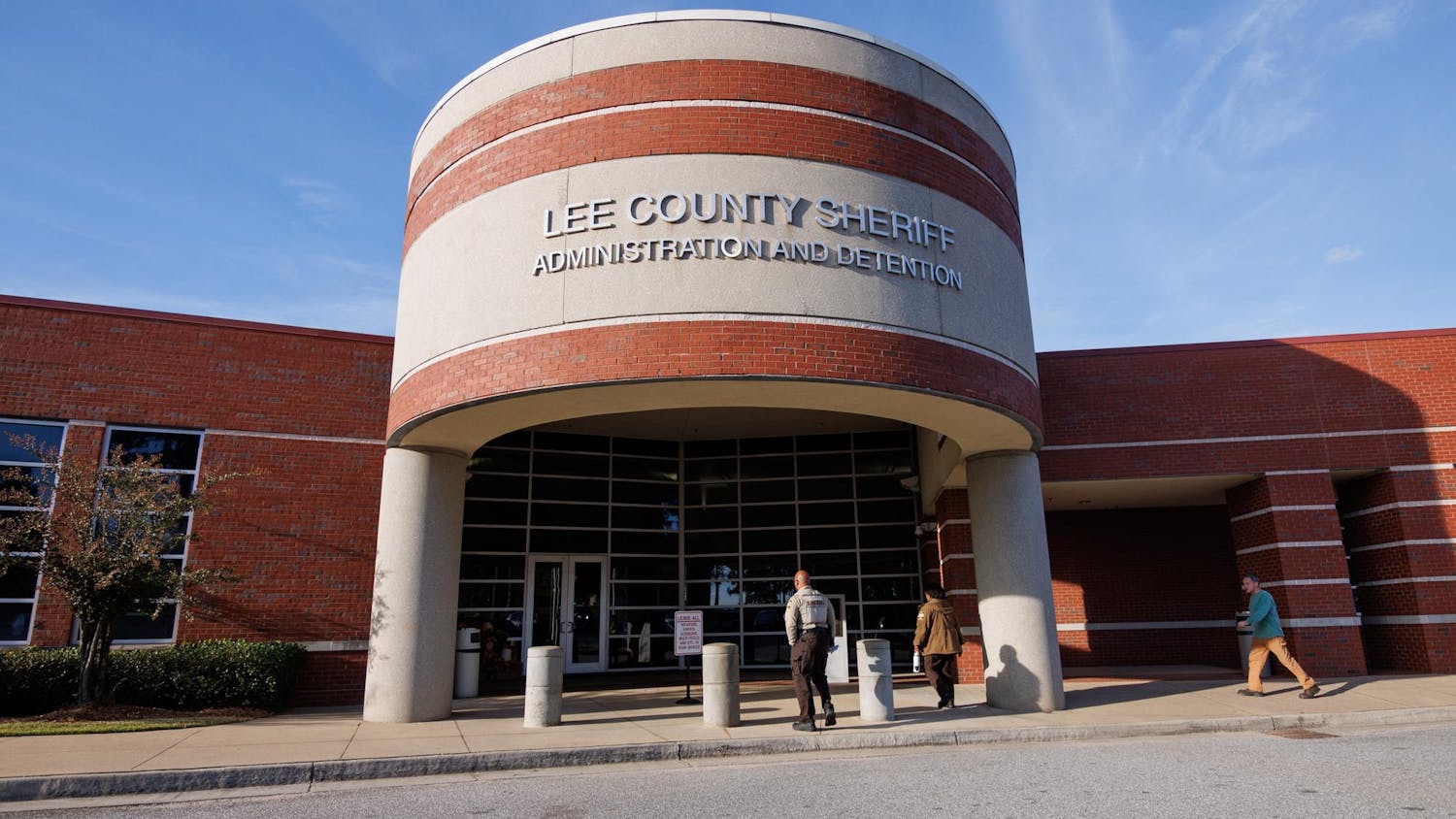Former Auburn Football Coach Pat Dye's name joined the ranks of other historic figures on the George Bengston Historic Tree Trail when he donated one of his Japanese maples to the City on Tuesday morning.
City workers had already dug the hole for the maple and planted the commemorative plaque beside the Trail's Gay Street entrance by the time Dye and Auburn Tree Commissioner Paul Schrantz arrived to present it to the public.
Dye expressed great concern for his tree before its presentation, asking tree commissioners and City employees about the quality of the soil, whether or not they plan to use fertilizer, plans for it's watering and disdain for a nearby willow tree off the trail and it's encroaching shade on a nearby pine.
When it was time to fill in the hole and officially plant the maple, Dye, now 77, took a shovel and began to move dirt as the rain began to lighten. He then stood beside Schrantz as the tree commissioner thanked him for his donation.
"We decided one of the things we wanted to do was to plant this tree in a prominent place in the tree trail to recognize the contributions you've made both to Auburn University and the City of Auburn and to highlight the passion you have for growing, planting and educating the public on Japanese maples," Schrantz said.
Schrantz then spoke about how much Dye contributed towards the collection of the late Toomer's Oaks' acorns for the School of Forestry to plant to preserve the historic trees' memories.
"Because of Coach Dye's initiative on these acorns, there are trees that line the walk going onto campus today that are direct descendants of the original Toomer's Oaks," Schrantz said. "Not everybody knows that story, and we thank you."
Dye said he had about 50 Toomer's Oak seedlings as well as two clones on his property now and expressed his wish to be buried under one of them.
"I have a deep love for trees and not just for Japanese maples. I love them all," Dye said. "I coached football for 27 years and I've been planting trees since I retired in '92, and I don't feel like I've ever worked a day in my life because I loved every minute of both of them."
Dye's maple tree will share the trail with seedlings from other trees of great significance to bother Alabama and the United States, including the Lincoln's Tomb White Oak, a Walden Woods Red Maple, a Helen Keller Southern Magnolia and a George Washington Carver Green Ash.
"I love the City of Auburn and you know I love the University. It's a special place in this country that you live when you live in Auburn, Alabama," Dye said. "When I retired from coaching I said, 'This is my home,' and when I read the Auburn Creed I said, 'This is what I believe.'"
Do you like this story? The Plainsman doesn't accept money from tuition or student fees, and we don't charge a subscription fee. But you can donate to support The Plainsman.





